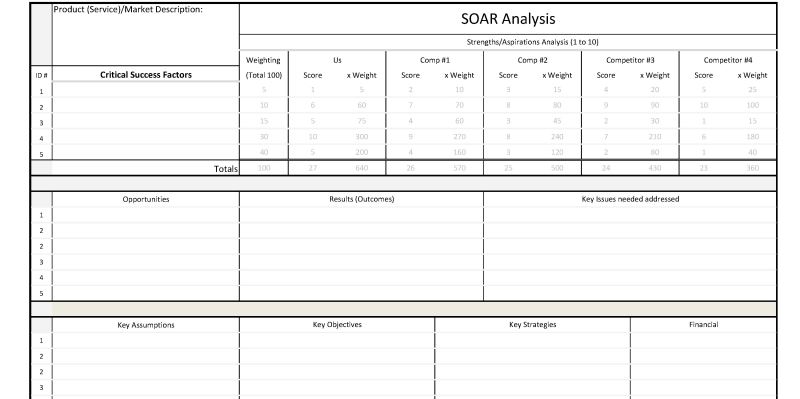The first steps of any Lean process are to identify value and create a current state. When working on the demand side of the equation, why should we identify the process through Non-Value Activities defined as waste (Weaknesses and Threats) versus the Value Added activities of SOAR?
I often use SOAR in the initial sequence of steps in working with clients. This helps ensure we carefully think through what outcomes we want to create, what supports and barriers we need to plan for, and who we have to involve within your organization to guarantee success. The starting point looks like this:
- Strengths: Internal to organization; What is our core
- Opportunities: External to organization; What might be
- Aspirations: Internal to organization; What should be
- Results: External to organization; What will be
At the micro-level, I again turn to SOAR…especially with new customers. We can accelerate the conversation by not trying to change them; it is a very difficult to do and you may not have the time to do it. SOAR allows you to lead with the positive side of the issues and many times you will often discover more.
The SOAR framework outlined:
- Strengths: External and Internal to an organization; what can be built on? How are present strengths used to get results? How do these strengths fit with realities?
- Opportunities: What are the external and internal stakeholders asking for? What existing skills exist to deliver?
- Aspirations: What do external and internal stakeholders care about most? What is the most compelling aspiration?
- Results: How will success be measured? What resources can be utilized? What are the best rewards?
Recommended Book The Thin Book of SOAR; Building Strengths-Based Strategy: http://amzn.to/2fWd3AY
Download SOAR Analysis PDF: https://business901.com/storage/2017/05/SOARa.pdf


